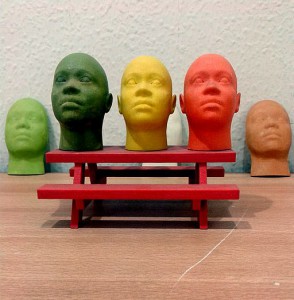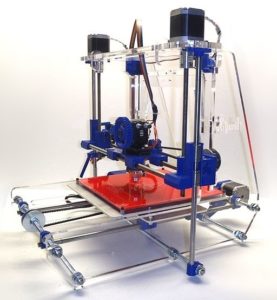Thorsten Schlaeger, PhD, heads the Human Embryonic Stem Cell Core of the Boston Children’s Hospital Stem Cell Program.
I recently took my 6-year-old son to a Family Science Day, hosted by the 2013 American Association for the Advancement of Science (AAAS) Annual Meeting in Boston. He was most excited by a model airplane made out of parts that had been generated with a 3D printer. The scientist, from MIT, explained to us how this technology works: Instead of generating 2D printouts by spraying ink onto paper, 3D printing technologies assemble 3D objects layer by layer from a digital model, generally using molten plastics or metals.
3D printing is quickly being adopted by many professions, from architects and jewelers who want to build mock-ups for clients, to manufacturers of products like bikes, cars or airplanes. Soon we might all have 3D printers in our homes: The kids could design and print their own toys, while the grownups might use the technology to generate replacement parts for minor home improvement jobs (our broken shower faucet knob comes to mind).
Not bad, but as a hospital scientist working in regenerative biology, I wonder if we could use 3D printers to build tissues and organs for patients. Could we 3D-print a new ACL for the Boston Celtics’ Rajon Rondo? This may sound like science fiction, but the concept is already being turned into reality.
A number of pioneers have developed printer-based fabrication methods that deposit cells and fibrous supporting structures in three dimensions. For example, Anthony Atala, formerly of Boston Children’s Hospital and now at Wake Forest University, has engineered cartilage tissue by 3D printing, alternating layers of living cells, embedded in a hydrogel, with synthetic fibers that serve as scaffolding. The product was 1 mm thick, contained five tissue layers and had sufficient mechanical strength for a weight-bearing tissue. Over time, the cells grew, produced cartilage-specific biomolecules and remodeled the artificial tissue structure into genuine cartilage-like tissue. Using MRI images, the tissue could be custom-designed to precisely fit each patient.
Admittedly, cartilage is a relatively simple tissue with only one principal cell type, whereas most tissues and organs are more complex, contain many different cell types and are vascularized—laced with blood vessels. So it’s a humble beginning, and it will be a while before the first patients are treated with custom-designed “spare parts” made on a 3D tissue printer (bad news for Rondo and the aging Celtics).
In principle, though, it is easy to imagine a printer that could build more elaborate 3D tissues—using more nozzles to deposit different cell types and scaffolds in precise, pre-determined locations—just as a conventional inkjet printer can generate complex, nuanced 2D images using a small number of inks. Indeed, scientists in Japan recently 3D-printed micro-organs containing two different cell types (vascular endothelial cells and liver cells) to create arrays of human tissue that could be used for drug screening.
In my own field—stem cell biology—one of the biggest challenges is to understand and mimic the cues that guide the maturation of pluripotent stem cells into the specialized cells, tissues and organs of the human body. What happens naturally and seemingly effortlessly during human development has proven exceedingly difficult to replicate, especially in standard 2D tissue culture systems. To be successful, we will have to do a better job at recreating the cellular micro-environments found during development.
Here, too, 3D cell printing technologies could come to the rescue, allowing us to grow stem cells in complex configurations with other cell types and to study the results. A group from the U.K. recently took a small step in this direction by successfully printing pluripotent human embryonic stem cells in precisely sized droplets.
Unless these spheroids are consistently generated at the right size, cellular responses will vary widely—a big problem in attempting to use them for disease modeling. The new printing method, described in the journal Biofabrication, may solve this problem and enable spheroids to be generated in large arrays for applications like large-scale drug testing. I don’t know that this particular technical feat will advance the stem cell field, but an open-minded, interdisciplinary approach will surely be the key to tomorrow’s cures.










